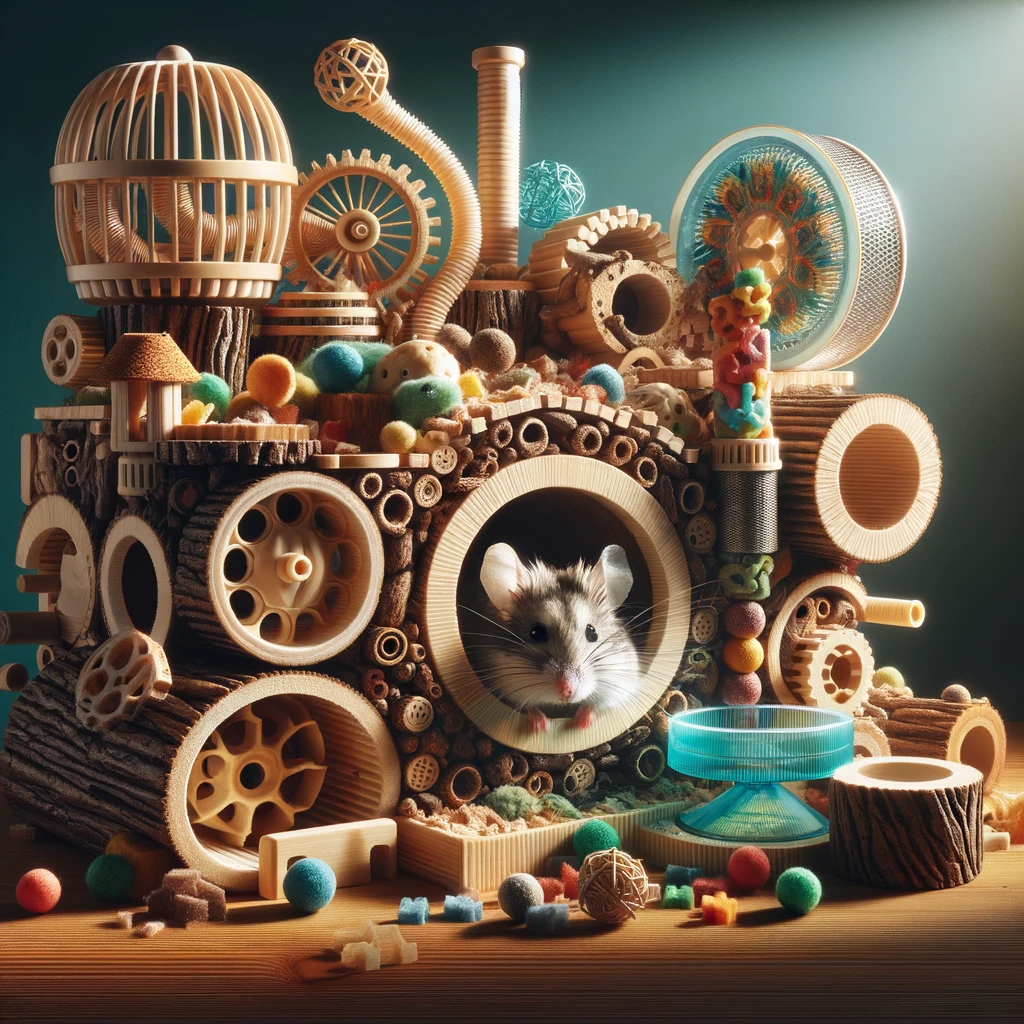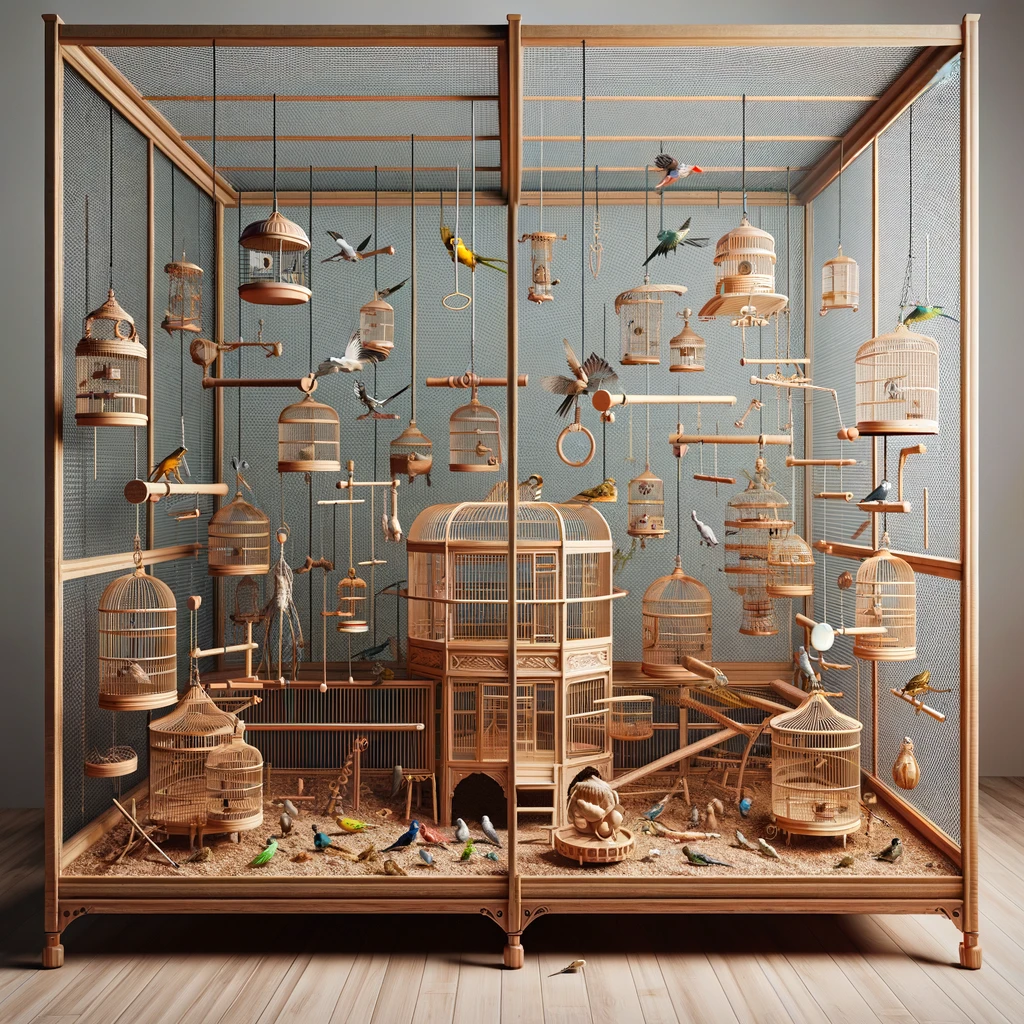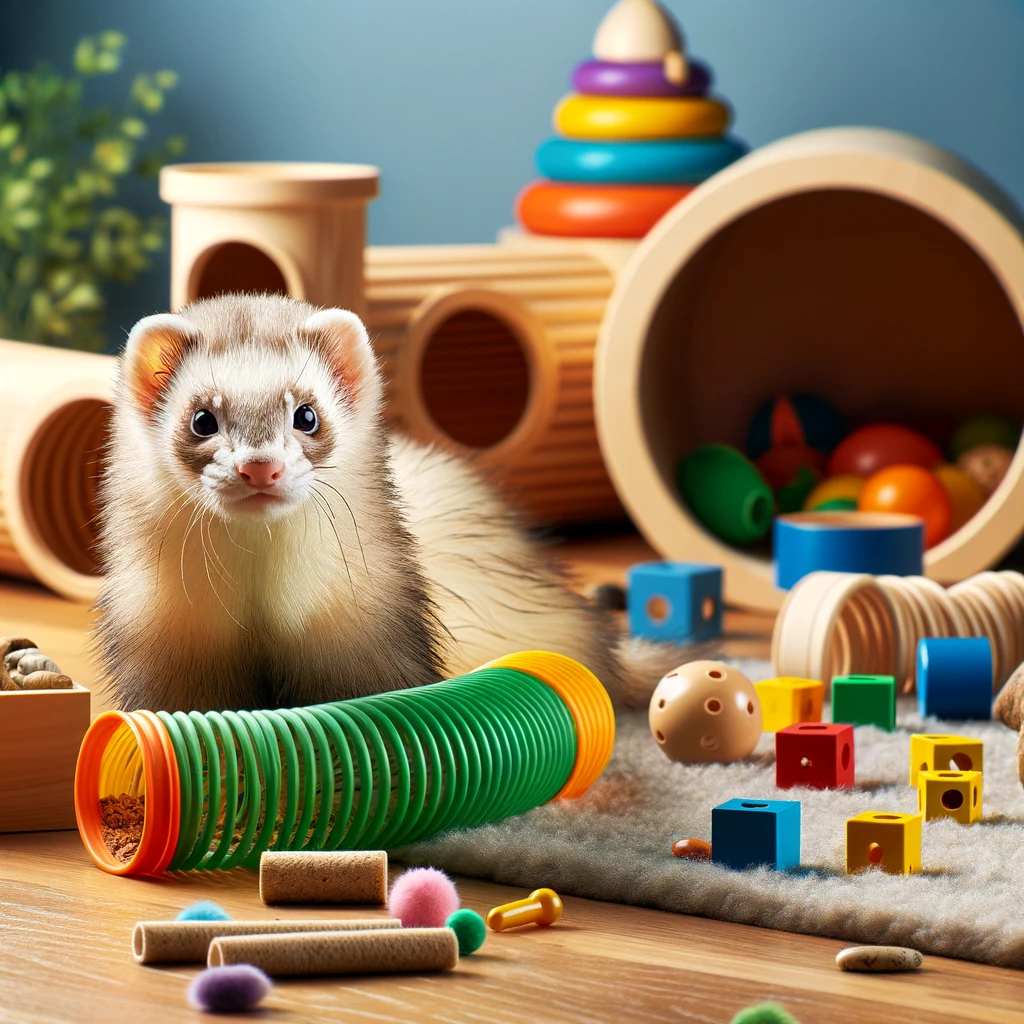Unconventional pets, such as reptiles, exotic birds, and rodents, are becoming increasingly popular among animal enthusiasts. Providing an enriching environment for these animals is crucial for their well-being and happiness. In this article, we explore creative and effective ways to enhance the environment for unconventional pets, ensuring they lead fulfilling lives.
Understanding the Needs of Unconventional Pets

Before setting up an environment for your unconventional pet, it’s essential to understand their specific needs. Different species have unique requirements that must be met to ensure their health and happiness. Researching the natural habitat and behaviors of your pet will provide valuable insights into creating an optimal living space. For example, reptiles like bearded dragons need basking areas with appropriate lighting to regulate their body temperature, while exotic birds require perches and toys that cater to their instinctual behaviors.
Knowing the psychological and physical health considerations of your pet is vital. Reptiles often need specific humidity levels, while birds require social interaction and mental stimulation. Understanding these needs helps in designing a habitat that mimics their natural environment, promoting their overall well-being.
Additionally, consider consulting with a veterinarian or an expert in exotic animals. They can offer guidance on the specific care requirements of your pet, ensuring that you provide the best possible environment for them to thrive.
Creating a Stimulating Habitat
Creating a stimulating habitat involves incorporating natural elements that resemble your pet’s natural surroundings. For reptiles, this might include rocks, branches, and plants that offer hiding spots and climbing opportunities. Birds can benefit from various perches, swings, and even natural branches to mimic a forest-like environment.
Designing multi-level environments can significantly enhance the living space for your pet. Rodents like hamsters and gerbils enjoy exploring tunnels and different levels, which keep them active and engaged. Similarly, reptiles and birds can benefit from vertical spaces that allow them to climb and explore.
Temperature and humidity control are critical aspects of a stimulating habitat. Reptiles, for example, require specific temperature gradients within their enclosures to regulate their body temperature effectively. Investing in quality heating and lighting systems, along with humidity monitors, ensures that these parameters are maintained consistently.
Interactive Toys and Enrichment Activities
Providing interactive toys and enrichment activities is essential for the mental and physical stimulation of unconventional pets. Different types of toys are suitable for various pets; for instance, birds enjoy puzzle toys that challenge their problem-solving skills, while rodents benefit from chew toys that help maintain their dental health.
DIY enrichment ideas can be both cost-effective and engaging for your pets. For example, creating simple puzzles from cardboard or offering food hidden in paper rolls can keep pets like birds and rodents entertained for hours. Reptiles might enjoy exploring new textures and objects within their enclosure, adding variety to their environment.
Mental stimulation and exercise are crucial for preventing boredom and associated health issues. Regularly rotating toys and introducing new activities can keep your pet’s environment fresh and exciting, encouraging natural behaviors and promoting overall well-being.
Dietary Enrichment and Feeding Strategies
Dietary enrichment involves providing a variety of foods that mimic your pet’s natural diet. For instance, offering different types of fruits, vegetables, and insects can keep reptiles interested in their meals. Birds benefit from seeds, nuts, and fresh produce that offer a range of textures and flavors.
Using feeding puzzles and challenges can make mealtime more engaging for your pets. For example, hiding food in puzzle feeders encourages birds and rodents to use their problem-solving skills to access their food. This not only provides mental stimulation but also encourages natural foraging behaviors.
Ensuring safe and nutritious food options is paramount. Always research the dietary needs of your pet species and consult with a veterinarian to avoid any harmful foods. Providing a balanced diet tailored to your pet’s needs supports their health and longevity.
Maintaining a Safe and Healthy Environment

Maintaining a safe and healthy environment involves regular cleaning and upkeep of your pet’s habitat. This includes routine cleaning of enclosures, replacing bedding, and ensuring that food and water dishes are sanitized. A clean environment prevents the buildup of harmful bacteria and reduces the risk of disease.
Monitoring for signs of stress or illness is crucial. Unconventional pets can sometimes hide symptoms, so regular observation is necessary. Look for changes in behavior, appetite, or physical appearance, and consult a veterinarian if you notice anything unusual.
Creating a routine and ensuring a quiet space for your pet can help reduce stress and promote a sense of security. Consistency in feeding times, lighting schedules, and interaction can make your pet feel more comfortable and secure in their environment.
Understanding the Needs of Unconventional Pets
Before setting up an environment for your unconventional pet, it’s essential to understand their specific needs. Different species have unique requirements that must be met to ensure their health and happiness. Researching the natural habitat and behaviors of your pet will provide valuable insights into creating an optimal living space. For example, reptiles like bearded dragons need basking areas with appropriate lighting to regulate their body temperature, while exotic birds require perches and toys that cater to their instinctual behaviors.
Knowing the psychological and physical health considerations of your pet is vital. Reptiles often need specific humidity levels, while birds require social interaction and mental stimulation. Understanding these needs helps in designing a habitat that mimics their natural environment, promoting their overall well-being.
Additionally, consider consulting with a veterinarian or an expert in exotic animals. They can offer guidance on the specific care requirements of your pet, ensuring that you provide the best possible environment for them to thrive.
Creating a Stimulating Habitat
Creating a stimulating habitat involves incorporating natural elements that resemble your pet’s natural surroundings. For reptiles, this might include rocks, branches, and plants that offer hiding spots and climbing opportunities. Birds can benefit from various perches, swings, and even natural branches to mimic a forest-like environment.
Designing multi-level environments can significantly enhance the living space for your pet. Rodents like hamsters and gerbils enjoy exploring tunnels and different levels, which keep them active and engaged. Similarly, reptiles and birds can benefit from vertical spaces that allow them to climb and explore.
Temperature and humidity control are critical aspects of a stimulating habitat. Reptiles, for example, require specific temperature gradients within their enclosures to regulate their body temperature effectively. Investing in quality heating and lighting systems, along with humidity monitors, ensures that these parameters are maintained consistently.
Interactive Toys and Enrichment Activities

Providing interactive toys and enrichment activities is essential for the mental and physical stimulation of unconventional pets. Different types of toys are suitable for various pets; for instance, birds enjoy puzzle toys that challenge their problem-solving skills, while rodents benefit from chew toys that help maintain their dental health.
DIY enrichment ideas can be both cost-effective and engaging for your pets. For example, creating simple puzzles from cardboard or offering food hidden in paper rolls can keep pets like birds and rodents entertained for hours. Reptiles might enjoy exploring new textures and objects within their enclosure, adding variety to their environment.
Mental stimulation and exercise are crucial for preventing boredom and associated health issues. Regularly rotating toys and introducing new activities can keep your pet’s environment fresh and exciting, encouraging natural behaviors and promoting overall well-being.
Dietary Enrichment and Feeding Strategies
Dietary enrichment involves providing a variety of foods that mimic your pet’s natural diet. For instance, offering different types of fruits, vegetables, and insects can keep reptiles interested in their meals. Birds benefit from seeds, nuts, and fresh produce that offer a range of textures and flavors.
Using feeding puzzles and challenges can make mealtime more engaging for your pets. For example, hiding food in puzzle feeders encourages birds and rodents to use their problem-solving skills to access their food. This not only provides mental stimulation but also encourages natural foraging behaviors.
Ensuring safe and nutritious food options is paramount. Always research the dietary needs of your pet species and consult with a veterinarian to avoid any harmful foods. Providing a balanced diet tailored to your pet’s needs supports their health and longevity.
Maintaining a Safe and Healthy Environment
Maintaining a safe and healthy environment involves regular cleaning and upkeep of your pet’s habitat. This includes routine cleaning of enclosures, replacing bedding, and ensuring that food and water dishes are sanitized. A clean environment prevents the buildup of harmful bacteria and reduces the risk of disease.
Monitoring for signs of stress or illness is crucial. Unconventional pets can sometimes hide symptoms, so regular observation is necessary. Look for changes in behavior, appetite, or physical appearance, and consult a veterinarian if you notice anything unusual.
Creating a routine and ensuring a quiet space for your pet can help reduce stress and promote a sense of security. Consistency in feeding times, lighting schedules, and interaction can make your pet feel more comfortable and secure in their environment.
Providing Social Interaction and Companionship
Social interaction is vital for many unconventional pets, particularly those that are naturally social in the wild. Birds, for instance, thrive on social interaction and can develop behavioral issues if left isolated. Spending time interacting with your pet through talking, playing, and training can significantly enhance their quality of life.
For pets like rodents, which may live in groups in the wild, having a companion can prevent loneliness and provide mental stimulation. However, it’s essential to ensure compatibility and monitor their interactions to prevent conflicts. Introducing new animals should be done gradually and under supervision.
Creating opportunities for social engagement within their environment can also be beneficial. This might include providing mirrors for birds or introducing safe, supervised playdates with other pets. Social interaction not only enriches your pet’s life but also strengthens the bond between you and your pet.
Sensory Enrichment and Stimulation
Sensory enrichment involves stimulating your pet’s senses in various ways. For example, different textures, sounds, and scents can create a more engaging environment. Reptiles might enjoy different substrates like sand, soil, or bark, which provide varied textures for exploration.
Sound enrichment can be particularly beneficial for birds and some rodents. Introducing natural sounds like bird calls or gentle music can create a more stimulating environment. Avoid loud or sudden noises, as these can be stressful for your pet.
Scent enrichment can also be a fun way to engage your pet’s senses. For example, introducing safe, non-toxic herbs or flowers can provide interesting smells for your pet to explore. Always ensure that any new sensory items are safe and appropriate for your pet species.
Behavioral Training and Positive Reinforcement
Behavioral training using positive reinforcement is an excellent way to enrich your pet’s environment. Training sessions provide mental stimulation and can help build trust between you and your pet. Birds, for instance, can learn tricks and commands through consistent training and rewards.
Positive reinforcement involves rewarding desired behaviors with treats, praise, or other positive stimuli. This method can be used to teach your pet new skills, reduce unwanted behaviors, and enhance their overall well-being. Consistency and patience are key to successful training.
Training sessions also offer an opportunity for social interaction and bonding. Regular, short training sessions are more effective than occasional long ones. Make training a fun and rewarding experience for both you and your pet.
Environmental Enrichment for Specific Pet Species
Different species of unconventional pets have unique enrichment needs. Reptiles, for example, benefit from environments that include hiding spots, climbing structures, and varied substrates. Providing UVB lighting and temperature gradients is also crucial for their health.
For exotic birds, enrichment can include a variety of perches, swings, and puzzle toys. Social interaction and flight opportunities are also important. Creating a stimulating environment that mimics their natural habitat helps prevent boredom and associated health issues.
Rodents require environments that allow for burrowing, climbing, and foraging. Introducing tunnels, wheels, and chew toys can keep them active and mentally stimulated. Ensuring that their habitat is spacious and offers various textures and levels can greatly enhance their quality of life.
Monitoring and Adjusting the Enrichment Program
Regularly monitoring your pet’s behavior and environment is essential for effective enrichment. Observe how your pet interacts with their environment and note any changes in behavior or health. This can help you identify what enrichment activities are most beneficial and enjoyable for them.
Adjusting the enrichment program based on your observations is crucial. If a particular toy or activity seems to lose its appeal, introduce new elements to keep the environment fresh and engaging. Continuous assessment and adaptation ensure that your pet’s needs are consistently met.
Seeking feedback from a veterinarian or a pet behavior expert can provide additional insights into your enrichment program. They can offer tailored advice and suggest new ideas based on the latest research and best practices.
Conclusion
Enhancing the environment for unconventional pets involves understanding their specific needs, creating stimulating habitats, providing interactive toys, enriching their diet, and maintaining a safe and healthy space. By investing time and effort into these areas, you can ensure that your unconventional pet leads a happy and fulfilling life. Encouraging natural behaviors and providing a variety of stimuli not only enhances their well-being but also strengthens the bond between you and your pet. Share your experiences and tips with other pet enthusiasts, and let’s continue to improve the lives of these unique and fascinating animals together.
References
- American Veterinary Medical Association (AVMA) – for general guidelines on pet care and exotic pet recommendations.
- Reptiles Magazine – for specific information on reptile habitats and care.
- BirdChannel.com – for details on enriching bird environments and care.
- Rodent Zone – for information on rodent habitats and enrichment activities.
- PetMD – for health and dietary recommendations for various unconventional pets.

Join Marjorie Pearson at dwfocus.com, your guide in the pet parenting world. As an experienced animal behaviorist, Marjorie offers heartfelt advice for pet owners. Her expertise spans from nurturing kittens to understanding dogs’ playful antics. She’s passionate about enhancing the bond between pets and their humans through understanding and empathy. Discover Marjorie’s practical training tips and insights on dwfocus.com, enriching your journey as a pet owner. #4PawsAndOwners #MarjorieEarsonPetWhisperer #dwfocus








